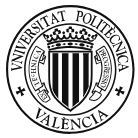Detailed introduction of Polytechnic University of Valencia:
Introduction and Overview
Geographical location: Located in Valencia, Spain, the city is the third largest city in Spain, the second largest seaport, and the "Sunshine City" in Europe. It has convenient transportation, one hour and forty minutes by high-speed rail to Madrid, and about three hours to Barcelona.
Student and faculty size: The school has nearly 40,000 students from all over the world, 2,600 teaching researchers and 1,700 professional administrative and service staff.
History and establishment time
The origins of the school can be traced back to several technical schools established in Valencia in the late 19th and early 20th centuries. In 1968-1969, according to Decree No. 5/1968 of June 6, the Valencia Higher Polytechnic Institute was established, which integrated four centers, including the Higher Technical School of Agricultural Engineers established in 1959, the Higher Technical School of Architecture operated as a commissioned department of the Barcelona School in 1966, and the Higher Technical School of Architecture established in 1968 according to Decree No. 5/1968 of October 24. Decree 1731/1968 created the Higher Technical School of Civil Engineers, Canal and Ports, and the Higher Technical School of Industrial Engineers.
In 1971, the institution was finally determined as a university by Decree 495/1971 of March 11, and was renamed the Polytechnic University of Valencia.
School Strength
Teaching Quality: As one of the top universities of science and engineering in Spain, it offers a wide range of courses covering engineering, architecture, computer science, business, art and other fields. Its majors such as mechanical engineering, art design, and architectural engineering are among the best in Spanish universities, and there are 5 undergraduate majors and 29 master's majors taught in English, which provides convenience for international students.
Faculty: It has 2,600 teaching researchers who have rich teaching and research experience in their respective fields and provide students with high-quality education and guidance.
Scientific Research Strength: It has 45 research centers and institutes, with fruitful scientific research results and important progress in many fields. For example, the Institute of Chemical Technology (ITQ) is at a world-class level in catalysis, new materials and photochemistry, and has submitted More than 150 patent applications, many of which have been authorized to different companies and are being commercially developed.
Institutional Nature
Public University.
Educational Philosophy
Committed to cultivating professionals with innovative spirit, practical ability and social responsibility, focusing on the all-round development of students, emphasizing the combination of theory and practice, encouraging students to participate in scientific research projects and practical activities, and improving students' comprehensive quality and employment competitiveness to meet the needs of social and economic development.
Key Laboratories and Disciplines
Key Disciplines: In the latest QS ranking, the school's mechanical engineering, art design, architectural engineering and other majors are among the top three in Spanish universities. In addition, the Statistics and Operations Research major ranks among the top in the world university major rankings, and majors such as Environmental Science and Telecommunications Engineering are also very strong. The college where its architecture major is located is one of the oldest architecture schools in Spain.
Key laboratories: In addition to the Institute of Chemical Technology (ITQ) mentioned above, the school also has a number of laboratories and research centers with important influence in their respective fields, such as the Communication Technology Laboratory, the Energy System Research Center, the Institute of Materials Science, etc. These research institutions provide students with a good scientific research environment and practical opportunities.
Department Settings
The school has 12 colleges and 45 departments, covering 159 majors, including 32 undergraduate majors, 98 master's majors and 28 doctoral majors, as well as 1 MBA program.
Ranking
Engineering and Technology: The school ranks among the top 100 in the world in the field of engineering and technology.
Comprehensive ranking: Selected as one of the "Reuters Top 100: Europe's Most Innovative Universities" and rated by Times Higher Education as one of the 200 universities with the greatest impact on the world and society and economy. One of the universities.
Expenses
Tuition fees: Undergraduates in Spanish public universities are generally free of charge. You only need to pay a small registration fee, about 1000-2000 euros per year. Tuition fees for master's and doctoral degrees vary depending on the major. Master's tuition fees are about 2000-5000 euros per year.
Living expenses: The cost of living in Valencia is relatively low, including accommodation, food, transportation, etc., about 600-1000 euros per month.
Campus Environment
Campus Distribution: There are three campuses, namely Valencia Campus, Alcoy Campus and Gandia Campus.
Valencia Campus: It is the main campus, located in Camidevila in the north of Valencia City, covering an area of 558,306 square meters and a building area of 462,848 square meters. The building was built in stages, starting in 1970, and is now home to the Higher Technical School of Construction Engineering.
Alcoy Campus: Located in the urban area of Alcoy City, it consists of landmark buildings such as the viaduct building, the old Ferrandis and Carbonell factories, and the modern building Georgina Branis Nadal. It has research units, gymnasiums and underground parking.
Gandía Campus: Located in El Grau, Gandia, 600 meters from the beach, 500 meters from the port, and 3 kilometers from the city, it covers an area of 25,461 square meters, has several buildings, and a total area of 32,047 Square meters.
Facilities and atmosphere: The school has modern buildings and complete facilities, such as libraries, information centers, fitness centers, tennis courts, bookstores, cafes, etc. It also has its own radio and television stations, providing students with rich learning and living resources, as well as a broad platform for practice and exercise. In addition, the school focuses on the all-round development of students and provides a variety of activities to the entire university community, including film, literature, drama, multimedia, photography, music, digital culture, literary and artistic competitions, exhibitions, etc. It is also one of the most important college sports institutions in the region, and 73% of the university community members participate in the school's sports activities.
-
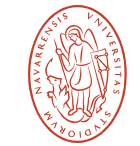
University of Navarra
-
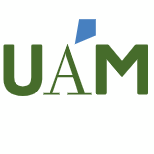
Autonomous University of Madrid
-

Polytechnic University of Catalonia
-

CEU University of San Pablo
-
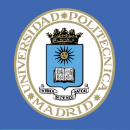
Technical University of Madrid
-

University of Lleida
-
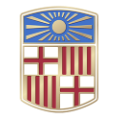
University of Barcelona
-

University of Oviedo
-
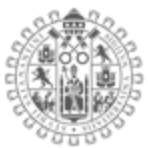
University of Salamanca
-

University of Valladolid
-

Mesoamerican University
-

Istmo University
-

Mariano Galvez University of Guatemala
-

Regional University of Guatemala
-

Galileo University
-

Francisco Marroquín University
-

Rafael Landívar University
-

University of the Valley of Guatemala
-

University of San Carlos of Guatemala
-

Technological Institute of Tlaxcala Plateau
-

Golfo University
-

Technological University of South Sonora
-

Technological University of Huejotzingo
-

Tizimín Institute of Technology
-

Chilpancingo Institute of Technology

